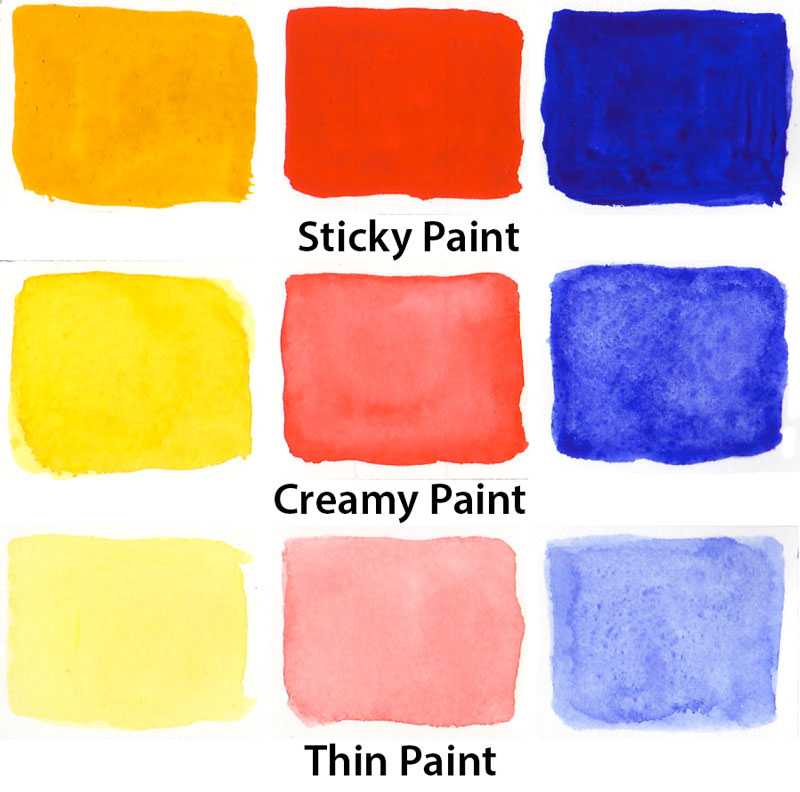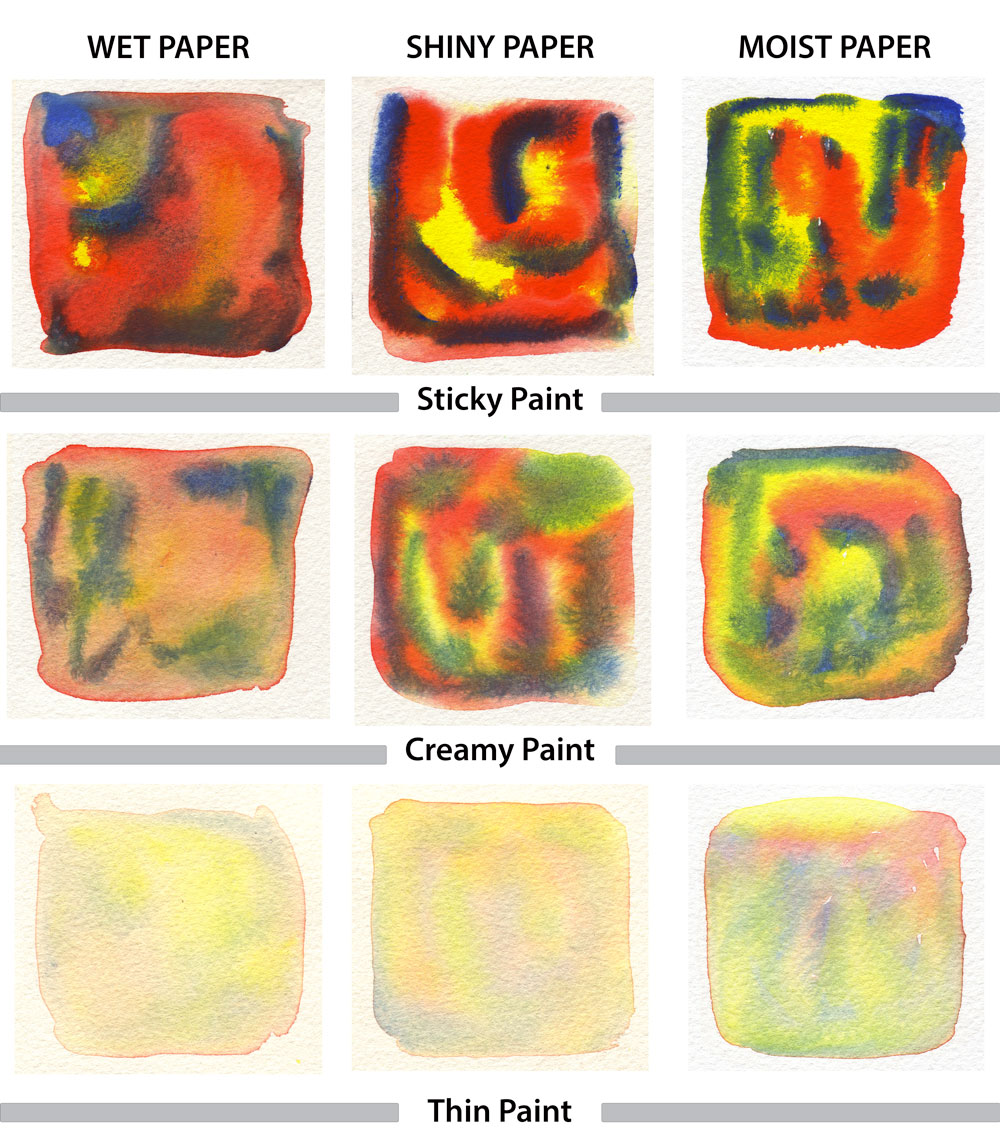Paint/Water/Paper
Welcome to watercolor painting! This is lesson that will help you learn about my favorite way to paint. Although I have painted in acrylics and oils, I love what I can do with watercolors.
Like all paint mediums, watercolor paints are ground pigment particles suspended in a binder. The type of binder determines whether the paint is an acrylic, an oil or a watercolor. Gum arabic is the binder used for watercolors and when you add water, the pigments disperse. The more water, the pigment disperses more and the paint color gets lighter. This is an important part of learning to paint with watercolors. You have to learn how to judge the pigment to water ratio because the water is your “white” paint. You have to learn to control how much water you mixed into the paint, how much water is on your brush, and how much water is on your paper. It is all “paint/water/paper.”
PAINT
I prefer tube paint and recommend you start your adventure with just three primary colors:
• Cobalt Blue
• Winsor Red, Naphthol Red or Pyrrol Red
• Cadmium Yellow or Cadmium Lemon
Sticky Paint
When the paint comes out of the tube, it is STICKY!
Squeeze out a small amount of one of the colors and add just a touch of water so that you can paint with it. Paint about a one inch square and feel the resistance on your brush.
IMPORTANT NOTE: Learning to understand the water to paint ratio is often how it FEELS on the brush.
Creamy Paint
Now add a little more water to your paint so that it is the thickness of heavy cream. Paint a small square to see how the color of the paint changes. It will still be pretty dark, but a shade lighter than your sticky paint sample. Notice that there is less resistance on your brush.
Thin Paint
Now add lots of water so that the paint flows freely and looks like tinted water rather than paint. In color theory, colors mixed with white, or in our case water, are called tints. For example, red mixed with white or more water becomes pink.

Now do the same for the other two colors. Clean you brush by rinsing it in water and dry it on a paper towel. Clean your palette by spraying water and it and wipe it with a paper towel.
Squeeze out a dab of the next color and repeat the sticky, creamy, and thin paint exercise. Then paint the third color.
Notice how the color has changed from the sticky paint to the thinned paint, its tint. Sticky paint is used for intense color and rich darks. Diluted paint is used for under-painting washes and glazing. It also tends to dry lighter than it looks when applied.
PAPER
The samples that you have just painted were all painted on dry paper. Everything can change when put water on your paper and that is what makes watercolor painting really fun!
So now we will play with the amount of water on your paper. Again you will be painting small sample squares, but make them about two inches so you have more room to experiment. Once you have wet the paper, experiment with the three thickness of your paint.
Very Wet Surface
Saturate the paper with lots of water so that it pools on the surface and forms a bubble that sits up on the paper. When you have this much water, you can really let the paint flow but you will have very little control. If the paper starts to dry, add in more clear water to create the maximum amount of paint flow.
Paint with all three colors in that very wet area and observe how the sticky paint, the creamy paint, and the thin paint behave. How much control do you have and how did the paint colors change?
Shiny Surface
Saturate the paper with lots of water so that it pools on the surface. Then using a damp brush, pull out the large pools of water. The surface will be shiny, but you won’t have big puddles and you will have more control of the paint. This is often the best surface to paint on, but the paint will bleed.
Paint with all three colors in that very wet area and observe how the sticky paint, the creamy paint, and the thin paint behave. How much control do you have and how did the paint colors change?

Moist Surface
As the paper continues to dry, the surface will lose its sheen. It will be damp and cool to the touch, but not look wet. The paint will work beautifully on this surface, but it still may bleed into areas where you don’t want it. Often in watercolor you have to wait until your paper is completely dry to have complete control.
Paint with all three colors in that very wet area and observe how the sticky paint, the creamy paint, and the thin paint behave. How much control do you have and how did the paint colors change?
IN THE NEXT LESSON YOU WILL LEARN A FEW MORE WATERCOLOR TECHNIQUES.
To print a PDF of this lesson, press the download button below:
